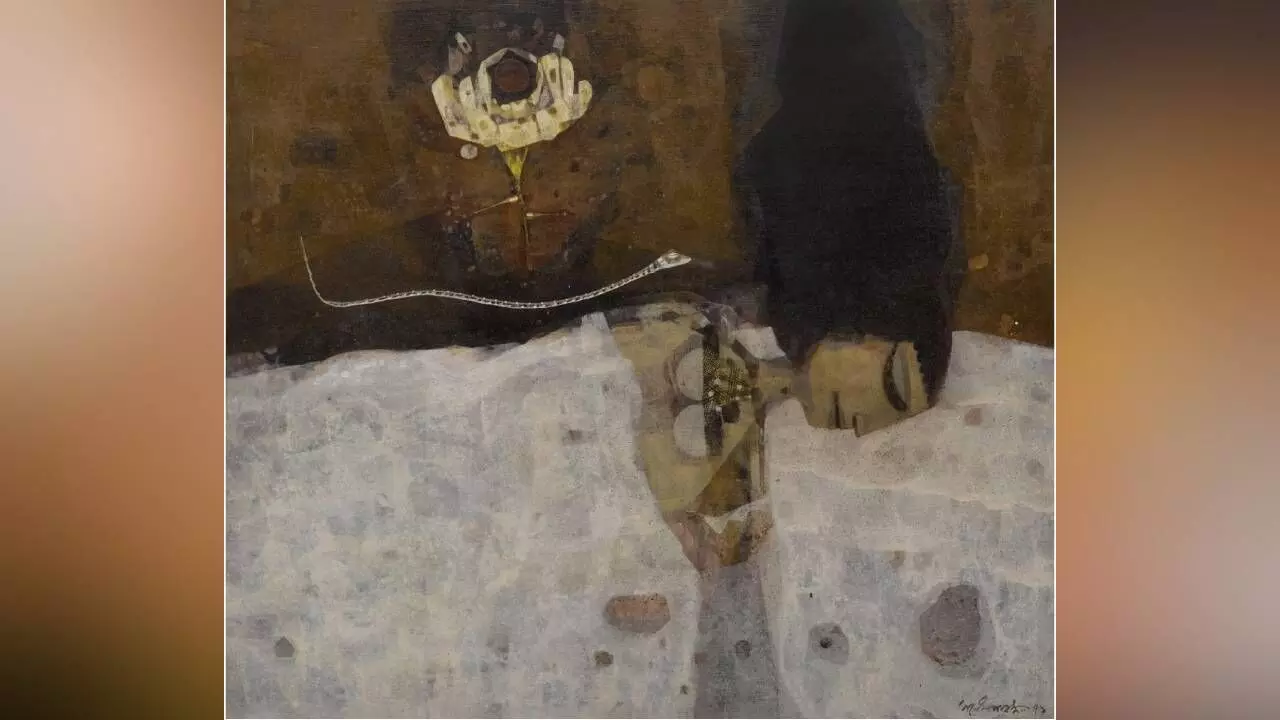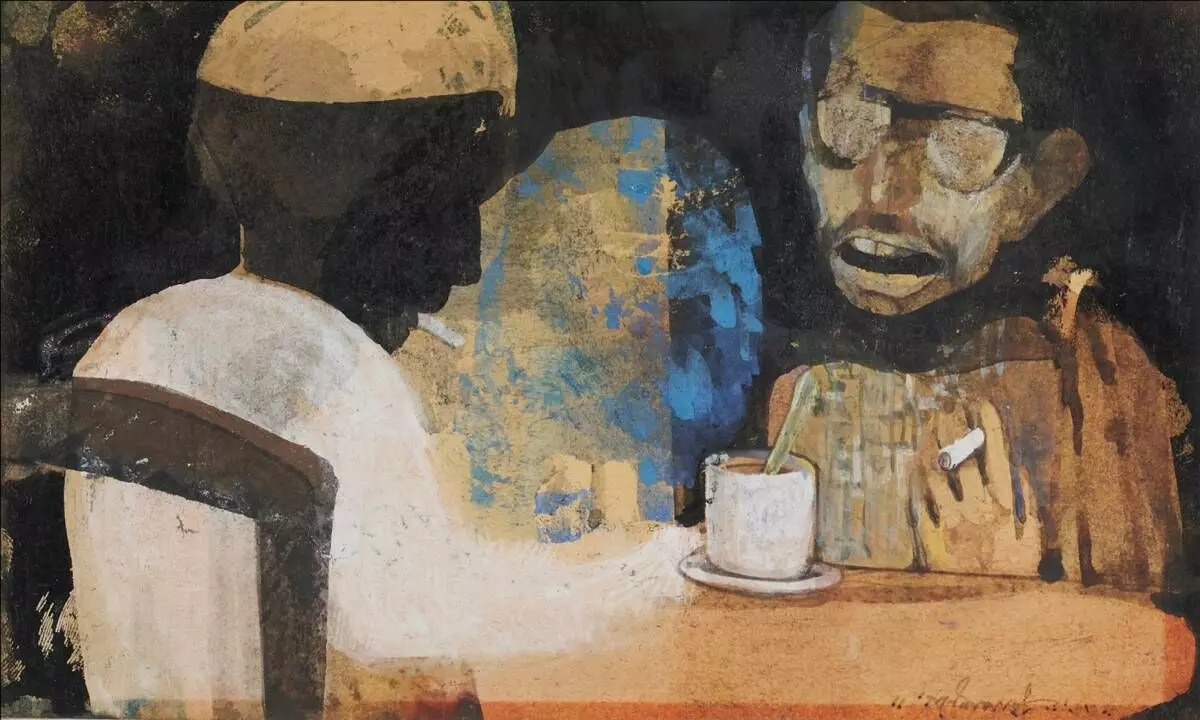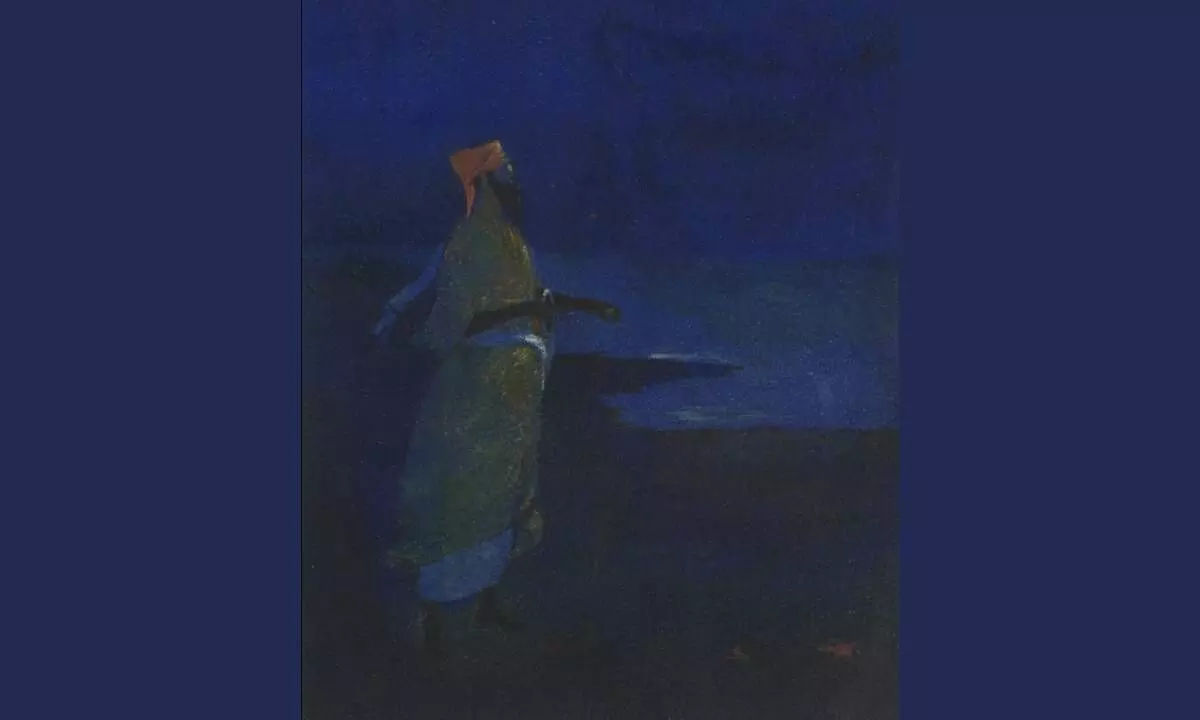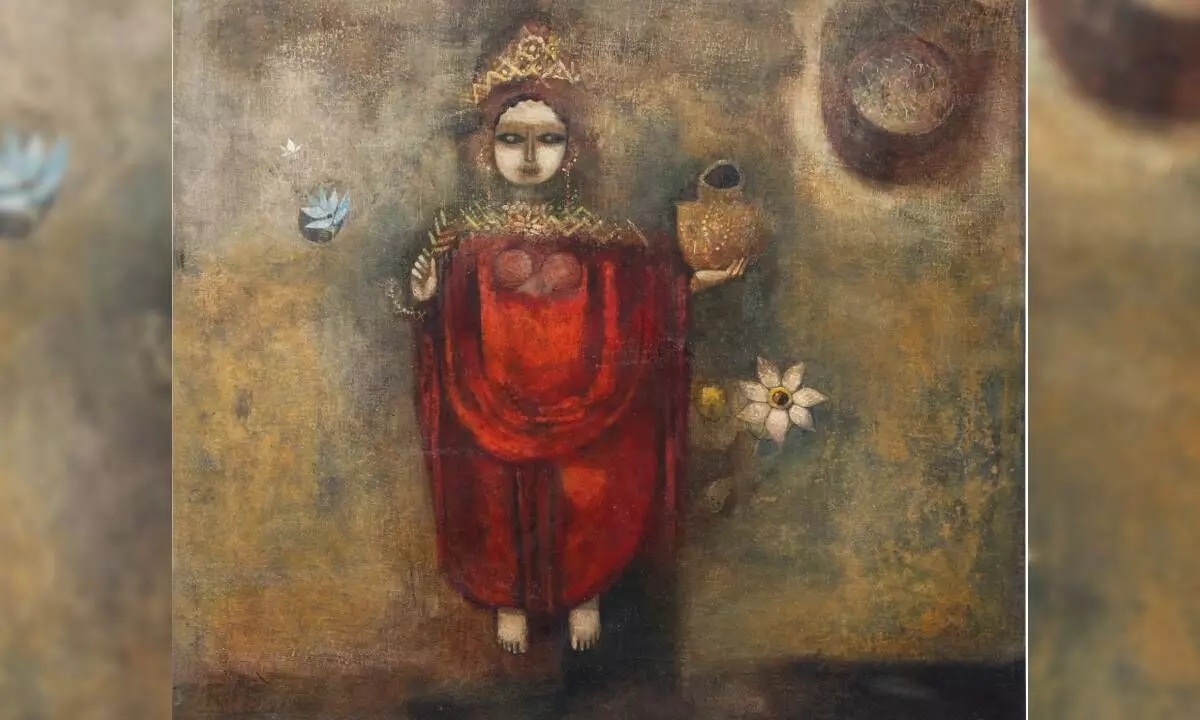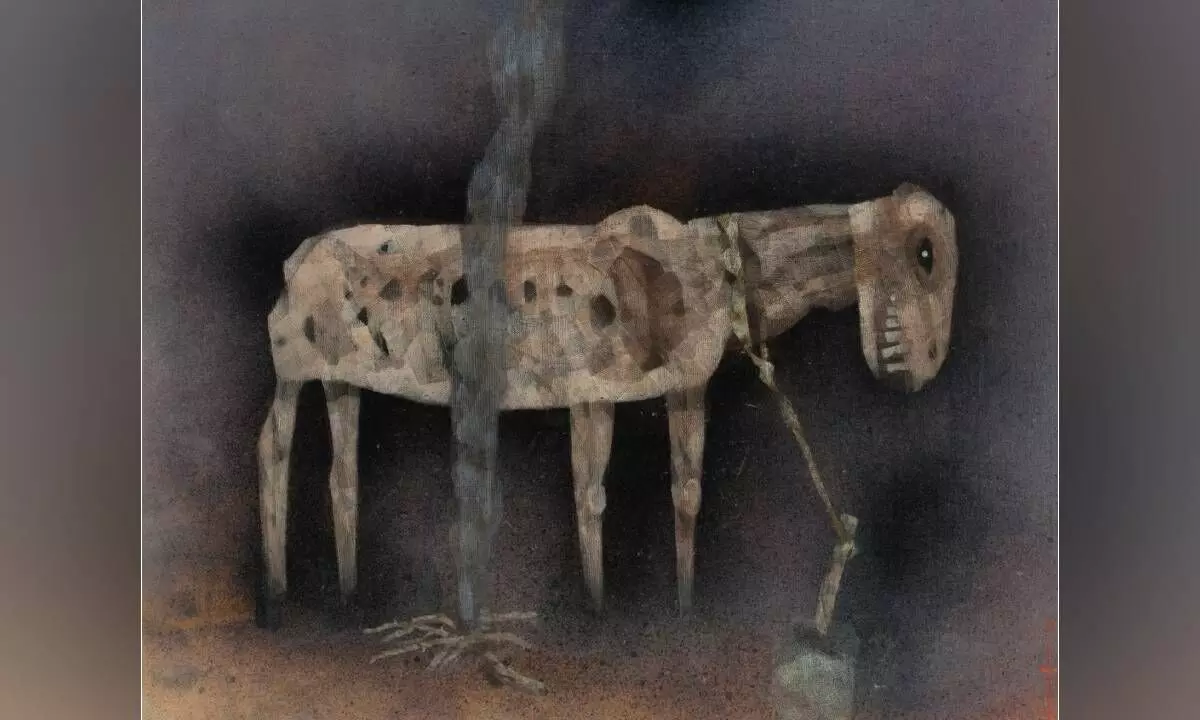The rise and rise of Ganesh Pyne
The modernist from Calcutta, known for his poetic surrealism, has emerged as the most significant artist just below the peak of the pyramid of Indian art market
image for illustrative purpose
The only big auction of Indian modern and contemporary art in the recent past has been the Saffronart’s online sale of June 28-29, where a Tyeb Mehta work topped the table. Mehta’s Bulls, an acrylic on canvas (2005-07) was estimated at Rs 28.52 crore - Rs 36.67 crore ($3,500,000-$ 4,500,000) and was finally sold for Rs 29.34 crore ($3,600,007).
That was expected even before the auction. Therefore, though the price achieved by Bulls was among the top ever attained by Indian works of art, it wasn’t the news we should be focusing on. For an art market watcher like me, it’s the price attained by works by masters who are not so well-known yet not an iota less deserving than the top sellers like Souza-Raza-Husain-Gaitonde-Mehta, etc., that is far more interesting.
In this context, this auction threw up happy results for some of India’s greatest artists who have for long deserved to experience bullish rallies in the auction market.
An analysis of auction results of the past year reveal that this trend - which started sometime after Covid-19 times - has remained consistent with the market slowly yet surely putting its bucks on superlative works of art, by masters who are not yet the toast of the circuit but fittingly belong there. One of these artis Ganesh Pyne.
Steady Faith in Ganesh Pyne
Ganesh Pyne (1937-2013), the modernist known for his individual style of poetic surrealism, has been skimming near the top of auction results for a few years now. In 2021 fall auctions, Pyne’s The Moon fetched Rs 79 lakh at Christie’s, while another of his work, The House fetched Rs 1.1 crore, above the highest pre-auction estimates. At Saffronart’s auction the following winter, his work The Shadow fetched Rs 1.08 crore.
The apogee was reached in March 2022, when his work, the Slumberland, was sold for Rs 4 crore at a Sotheby’s auction, against an estimate of Rs 76 lakh - Rs 1.1 crore.
It’s clear that this is one name where people can safely place their hearts as even financially, it is not going to be a losing proposition in the long run.
At the recently concluded Saffronart Summer Online Auction of Modern and Contemporary South Asian Art, two of his works sold for way above their pre-auction estimates. His 1963 work, Two Friends, gouache on paper, was estimated at Rs 4.89 lakh - Rs 6.52 lakh ($6,000 - $8,000) but went for a whopping Rs 58.77 lakh ($72,120). It’s a brilliant modernist expression of a profound conversation between two friends, over cigarettes and tea (or coffee) in a public place, in what can safely be conjectured to be a coffee house in Kolkata, Pyne’s hometown one of whose chief definers is adda or gossip session over cha (tea) at a coffee house. As per Saffronart’s auction catalogue, the work is likely a depiction of a scene at the renowned Calcutta Coffee House, which was located just a few steps away from the artist’s residence, and was a hub for students and political debate.
Another of his works with surrealist overtones, titled Baul, went for more than four times its highest pre-auction estimate. An early career work, this gouache on paper was made by Pyne in 1959 and was estimated at Rs 3.26 lakh - Rs 4.89 lakh ($4,000 - $6,000). It eventually fetched Rs 19.56 lakh ($24,000). It is a mesmerizing work featuring a singer of the Baul community, the country minstrel-mystics, standing by a river in early evening and looking over the horizon.
Knowing Ganesh Pyne
Ganesh Pyne was born in Calcutta in 1937, a highly significant time to be born in India, and especially in the eastern metropolis. His growing up years coincided with the intense atmosphere in Calcutta in particular and India in general as the country was in the throes of freedom struggle spiralling towards its logical conclusion. Undoubtedly, the general experiences of life in such times - coupled with the hardships unleashed on the family with the early death of his father - shaped his artistic vocabulary for all times to come. His characteristic style, often termed as poetic surrealism, was also greatly inspired by Bengal folk mythology which he learnt about through his grandmother’s stories. He was also an admirer of the works of Abanindranath Tagore, the pioneer of the revivalist Bengal School of modern Indian art. The translucent effect of Pyne’s earlier paintings can be attributed to his admiration of Tagore’s art.
Once described by MF Husain as the best painter in the country, Pyne had a rich career with his pathbreaking, modernist works showing great depth and layers right from the start. He had trained as a draughtsman and animator at Mandar Studios in Calcutta, run by filmmaker Mandar Mullick, who brought in trainers from Disney Studios. This experience helped Pyne achieve distortion and exaggeration of facial features in his later works.
His works achieved tremendous acclaim in national and international art circles during his lifetime and it’s fitting that his works are now reaching the top of the art market pyramid too. As his works begin to come to the art market regularly through auctions, the price points at which these would be available in near future can only be guessed.
The recent Saffronart auction of modern and contemporary Indian art, like the others that have taken place in the past two years, has thrown up names of other masters whose works are finally getting the price they have deserved for so long. This column hopes to learn about those other names in detail in subsequent editions.
(The writer is a New Delhi-based journalist. She blogs at www.archanakhareghose.com)


